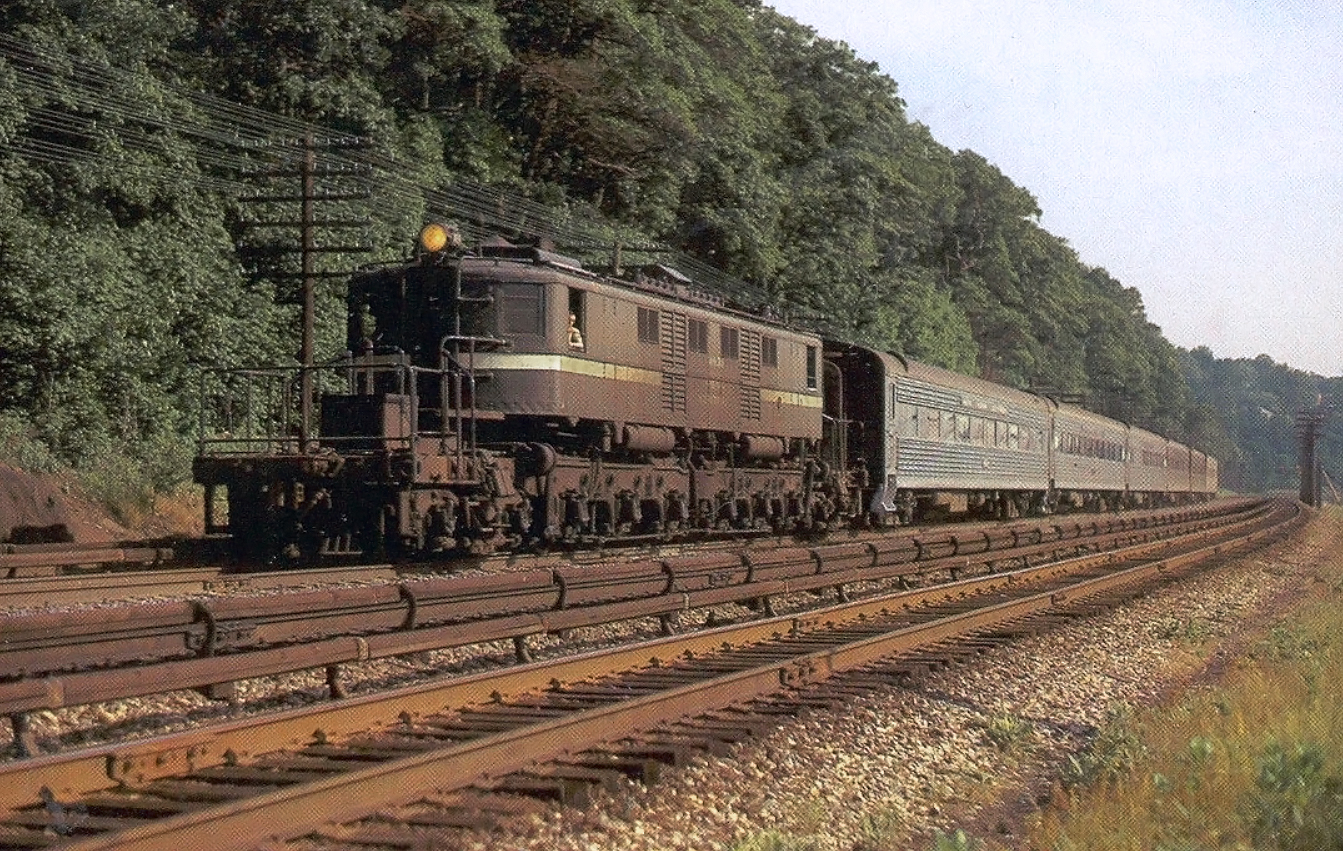NYC's "P Motor" Electric Locomotives
Published: July 19, 2025
By: Adam Burns
New York Central's "P Motor" were a late 1920s development and initially used at the new electrified Cleveland Union Terminal, which opened in 1930.
Built by the American Locomotive Company (Alco) with electric components from General Electric (GE), the P Motors were an upgrade from NYC's earlier S-Motor electrics that had been in service since the early 1900s.
The P Motors featured a 2-C+C-2 wheel arrangement and interesting long "porches" fore and aft of the main carbody. In typical NYC fashion they utilized third-rail operation and were rated at 3,000 horsepower, making them well-suited for handling heavy passenger trains.
Initially, they were a shared investment among several railroads for the Cleveland Union Terminal project, with NYC as the primary stakeholder.
In the 1950s, as diesels became the preferred choice and the electrification project was abandoned, the NYC fully acquired these locomotives. They underwent a transformation into the P-2 class and moved to the New York electrified zone to support the aging T-Motors from 1913. These engines spent the rest of their operational life pulling the line’s top passenger trains.
The P Motors played an iconic role in the electrified history of New York railroading, exemplifying the transition era in railway technology and aiding the accommodation of increasing commuter demands.
 One of the former New York Central's hearty P Motors is seen here during the Penn Central era at Hastings-on-Hudson, New York with westbound Amtrak train #75 during May of 1971. At Croton-Harmon (Croton-on-Hudson), about 14 miles to the north, diesel power (probably E8's) will take over the run to Buffalo. Henry Butz photo.
One of the former New York Central's hearty P Motors is seen here during the Penn Central era at Hastings-on-Hudson, New York with westbound Amtrak train #75 during May of 1971. At Croton-Harmon (Croton-on-Hudson), about 14 miles to the north, diesel power (probably E8's) will take over the run to Buffalo. Henry Butz photo.In the 1920s, the Van Sweringen brothers spearheaded a new union station to be built in downtown Cleveland, inspired by New York City's Grand Central Terminal. They planned to have it located beneath a sprawling office and retail complex, featuring an impressive 52-story tower.
The trains were to utilize underground platforms, climbing a steep grade to cross a new bridge over the Cuyahoga River. But, given the steam locomotives of that era, the emissions would be a major problem for this setup.
The brothers' solution? Electrification. With the New York Central being the main operator of the station ,and responsible for upkeep at Collinwood Yard, they called on the expertise of the American Locomotive/General Electric team to design the electric units needed.
At the time Alco/GE, along with Baldwin/Westinghouse, were the predominant builders of electric locomotives throughout the U.S.
Ultimately, the locomotive fleet consisted of 22 units, given Class P-1a, and could produce 3,000 horsepower via an overhead 3,000-volt, DC cantenary system. The locomotives were 80 feet in length and featured a central cab with long "porches" fore and aft that contained the lead and trailing trucks.
Data Sheet
| Builder | American Locomotive/General Electric |
| Completion Date | 1929–1930 |
| Production Roster | P-1a: 22 P-2a: 1 P-2b: 20 |
| Wheel Arrangement | 2-C+C-2 |
| Gauge | 4 feet, 8 ½ inches |
| Lead Wheels Diameter | 36 inches |
| Driving Wheels Diameter | 48 inches |
| Length | 80 feet |
| Adhesion |
P-1a: 311,000 lbs P-2a: 296,300 lbs P-2b: 288,500 lbs |
| Locomotive weight |
P-1a: 418,900 lbs P-2a: 406,000 lbs P-2b: 388,000 lbs |
| Electrical Syste, |
P-1a: 3000 volt/DC P-2: 660 volt/DC |
| Current Pickup |
P-1a: Overhead Pantographs (dual) P-2: Third rail |
| Traction motors |
P-1a: GE 278C (6) P-2: GE 755A (6) |
| Transmission | Nose suspended traction motors |
| Performance | |
| Maximum speed | 70 mph |
| Power output | 3,030 hp |
| Tractive effort | 77,925 lbs |
Operations and Later Years
The locomotives sported NYC markings but were labeled for Cleveland Union Terminal and began operations in 1929, making the rounds between Collinwood and Linndale for two decades.
By 1951, as diesel-electrics grew in popularity the NYC experimented with converting the fleet for use on the 660 DC third rail system that had long served its New York City network since the early 20th century.
They reclassified one P-2a prototype at their Harmon Shops. After successful trials, they sent the remaining active units back to GE in 1955 to undergo modifications. This transformation not only lightened the engines but boosted their power to 4,243 horsepower without sacrificing performance.
The rebuilt P-2s continued to operate for nearly 20 more years, hauling NYC's top passenger trains between Croton-Harmon and Grand Central Terminal.
Some even lasted into the early Penn Central years. However, the dramatic drop in long-distance passenger service by the 1960s led to their retirement. All remaining units met the scrapyard starting in 1972, with none kept for posterity.
Recent Articles
-
North Carolina's 'Wine Tasting' Train Rides
Dec 14, 25 07:31 PM
A noteworthy way to explore North Carolina's beauty is by hopping aboard the Great Smoky Mountains Railroad and sipping fine wine! -
Nevada's 'Wine Tasting' Train Rides
Dec 14, 25 07:20 PM
While it may not be the first place that comes to mind when you think of wine, you can sip this delight by train in Nevada at the Nevada Northern Railway. -
Nevada - Murder Mystery - Dinner Train Rides
Dec 14, 25 12:40 PM
Seamlessly blending the romance of train travel with the allure of a theatrical whodunit, these excursions promise suspense, delight, and an unforgettable journey through Nevada’s heart.



